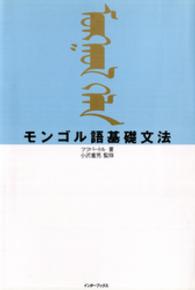- ホーム
- > 洋書
- > 英文書
- > Cinema / Film
Full Description
In fascist Spain, Francoism - like German and Italian fascism - produced its own particular brand of kitsch. Deploying religious and historical iconography drawn from Spain's centuries-long struggle against Islam, Francoist ideologues created a kitsch interpretation of Spain's historical past designed to replace more complex and nuanced accounts, where religious and historical iconography combined with kitsch aesthetics to project a picturesque, clichéd image of Spain. The ultimate goal of this vast production of Francoist kitsch was to produce a submissive subject who, by identifying with Francoist aesthetics, would identify with state ideology.
This book engages with the making and unmaking of Francoist kitsch aesthetics through the analysis of Spanish cinema. It examines five highly influential Francoist films produced from 1938 until 1964 and three later films by critically acclaimed directors Luis Buñuel, Guillermo del Toro, and Alex de la Iglesia that attempt to undermine Francoist aesthetics by re-imagining its visual and narrative clichés.
Contents
Preface
Introduction
Chapter 1: The Petrified Tears of General Franco: Kitsch and Fascism in José Luis Sáenz de Heredia's Raza
Chapter 2: Romancero Marroquí and the Francoist Kitsch Politics of Time
Chapter 3: Los Últimos de Filipinas: the Spatio-Temporal Coordinates of Francoism
Chapter 4: Surcos: Neorealism, Film Noir and the Puppet Master
Chapter 5: Franco, ese hombre: from Kitsch Artist to Kitsch-Man
Chapter 6: Viridiana: The World, the Flesh, and the Devil
Chapter 7: Balada triste de trompeta: Of Ghosts and Clowns
Chapter 8: Under the Sign of Saturn: The Labyrinth of Moral Choices in Francoist Spain
Works cited








